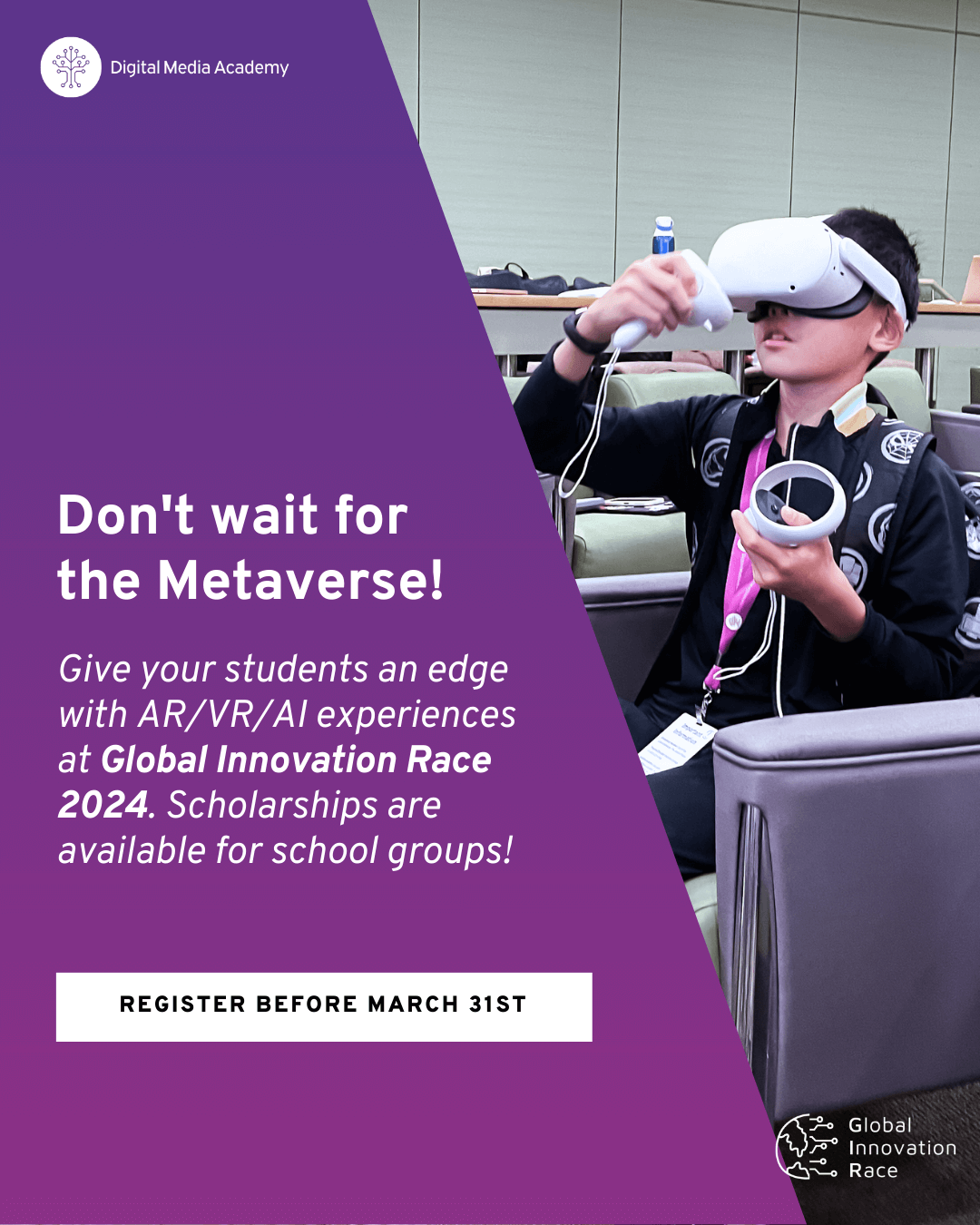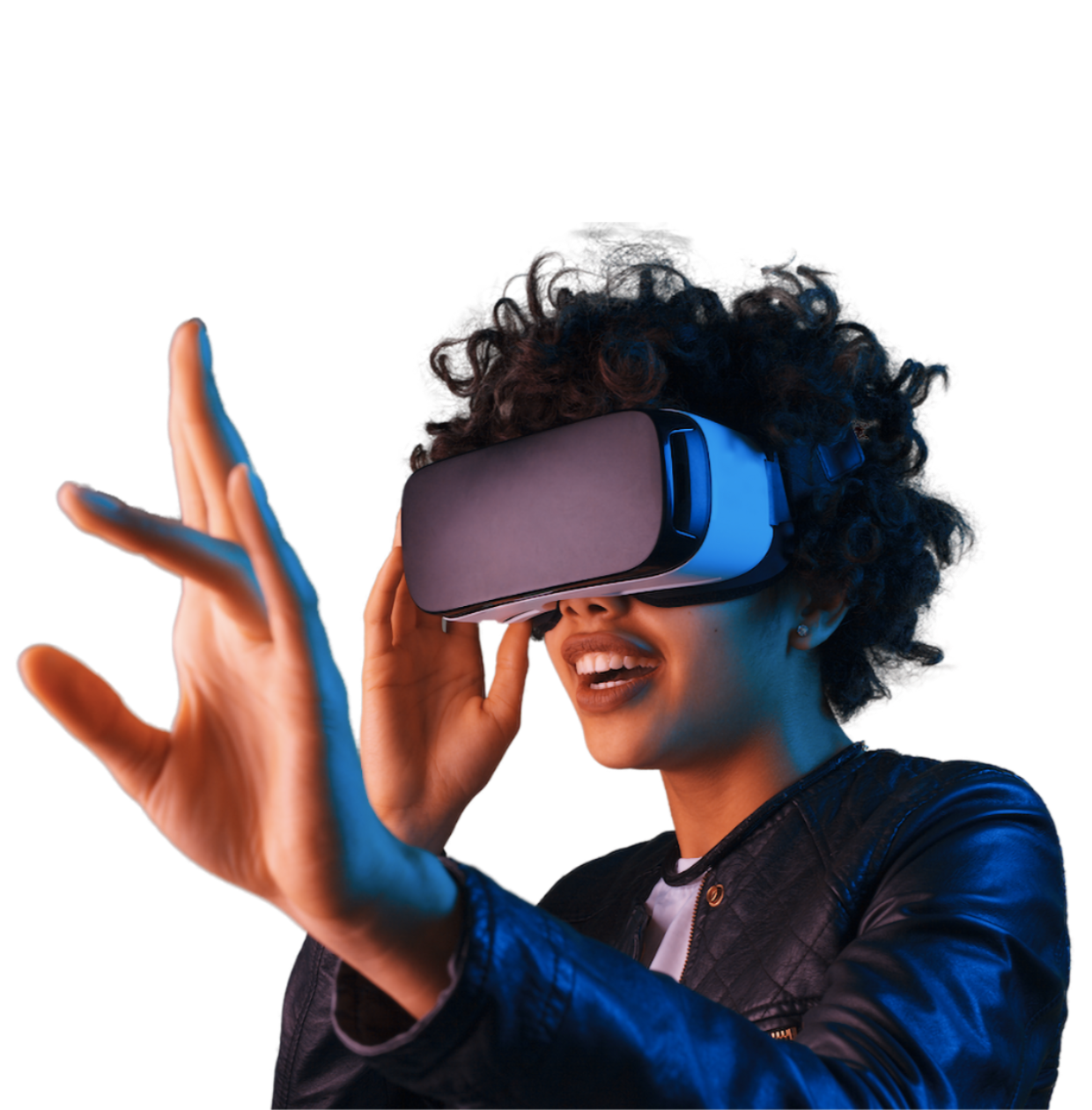Education is changing… Imagine a classroom where the Great Barrier Reef stretches across the floor, brought to life through augmented reality (AR). Students wear virtual reality (VR) headsets to dissect a frog, peering into its intricate biology without the mess or limitations of a physical specimen.
Thanks to advancements in artificial intelligence (AI) and the convergence of AR, VR, and mixed reality (MR), these experiences are going to become increasingly accessible, rapidly changing the way we learn and teach, and making STEAM subjects more engaging, interactive, and accessible than ever before.
This week we’re exploring how this emerging tech is shaping the future of learning.
Let’s dive in! 🏊
The Future of Learning: Supercharging STEAM with Emerging Technologies
There has been much talk about these learning experiences for the last 5-10 years. Remember when Google Cardboard was going to change everything? Yet, all the recent advancements in Artificial intelligence (AI) are making the future closer.
AI is fuelling the development of AR/VR/MR experiences that are personalized, interactive, and contextual. For example, developers at VictoryXR are in the process of taking Aristotle’s writings, uploading them to AI software, and adding historical context from when he was alive and his biography. Students will be able to step into a time machine and have a full conversation with Aristotle.
Soon, classrooms will transcend physical limitations. Students across the globe will be able to gather in a virtual Colosseum, learning about Roman history through immersive simulations facilitated by the metaverse, a network of interconnected virtual worlds.
Traditional gaming consoles, not just high-end VR equipment, could unlock these 2D/3D educational experiences, fostering a more inclusive learning environment.
AR: Bringing the Future to the Classroom Today
While the metaverse concept is a captivating future possibility, it’s still in its early stages of development and not something that can be realistically integrated into classrooms today. The good news? AR and AI apps offer a more accessible entry point for STEAM educators today.
Unlike VR, AR overlays digital information onto the physical world, making it accessible through smartphones and tablets. Imagine botany lessons where students identify virtual plant life through their phone cameras, or history classes where historical figures come alive in AR overlays on textbooks.
AR apps already exist for dissecting virtual frogs and exploring the solar system – possibilities once confined to expensive labs and planetariums.
Creating interactive experiences accessible through more readily available smartphones and tablets eliminates the barrier of expensive VR equipment, making it a powerful tool for educators to get started with now.
Designing a Future-focused Classroom
While these technologies offer incredible potential, implementing them effectively requires careful planning. Here are some tips for designing an AR/VR/AI-powered classroom:
- Start Small & Focus on Curriculum Integration: Don’t try to overhaul your entire curriculum at once. Identify specific learning objectives and choose technologies that seamlessly integrate into your lesson plans.
- Be Purposeful: Why are you bringing emerging tech into your classroom? How can it enhance specific concepts and align with your curriculum goals? Don’t introduce new tech just for the sake of it!
- Make it Supplemental: Lessons that use role-playing, interact with tangible objects or physical settings, or require specific learning tasks are well suited for adaptation. However, technology should always enhance traditional lessons, not replace them. What are experiences that students can’t have in the classroom? Bring those in with emerging tech.
- Explore Existing Apps: New educational apps that leverage emerging tech like AR, VR, and AI are popping up daily. Look for ones that are age-appropriate and curriculum-aligned. Some popular options include Merge Cube, Google Arts & Culture, DreamBox Learning (AI-powered math), Labster (VR science labs, and Duolingo Schools (personalized language learning).
- Create Your Own Experiences: Some platforms allow educators to develop simple AR/VR/AI experiences. Students can even get involved!
- Focus on Collaboration: Encourage students to work together, sharing their tech-enhanced views of the world.
- Focus on creating a blended learning environment: Combine AR/VR/AI experiences with engaging activities like discussions, group projects, and hands-on experiments.
Accessibility Matters
One of the most promising aspects of AR/VR/AI in education is their potential to create a more inclusive learning environment.
- AR can be a powerful tool for students with visual impairments through audio descriptions and text-to-Braille features.
- VR can create safe environments for students with anxiety or sensory processing challenges.
- AI-powered tutors can offer personalized support for students with diverse learning needs, ensuring they are not left behind.
Remember: When integrating emerging technologies into your educational practices, it’s essential to prioritize tools that align with your budget and student requirements. While VR headsets are becoming more affordable, AR experiences typically offer greater accessibility. Additionally, consider alternative solutions such as web-based experiences for students without access to specialized hardware.
Looking Ahead
The convergence of AR, VR, and AI promises a future where classrooms are transformed – dinosaurs roaming the halls, historical figures brought to life, and students dissecting a frog (virtually, of course!).
This is the incredible potential of emerging tech to revolutionize k-12 education with personalized learning experiences that cater to diverse student needs, all within immersive, interactive environments.
While challenges remain, as STEAM educators we have the opportunity to become pioneers in this exciting new era of education.
Equip your students with the skills needed for this exciting future at Global Innovation Race 2024

Registration Closes March 31st!
Bring a group of 5+ students (aged 13-17) to Global Innovation Race 2024 and receive a year of Leading STEAM Schools in the World membership for your school. We also have GIR Scholarships available for school groups!
There are 3 ways we can help your school with your STEAM Programming:
🌍 Bring Students to Global Innovation Race on-campus at Stanford University (July 17-27th)
Fuel your students’ passion for technology and innovation while future-proofing their skills with the summer experience of a lifetime! Global Innovation Race is an international call to action for student groups (aged 13-17) across the globe to design solutions that will shape the future. Space is limited. Learn more here!
🌐 Join Leading STEAM Schools in the World
Developed by Stanford-affiliated educators and researchers, Leading STEAM Schools in the World (LSSW) Membership helps schools and educators meet the ever-evolving needs of 21st-century learners. Membership is customizable, combining comprehensive curriculum, tailored consultation, and a supportive global community of like-minded schools.
💡 Become a STEAM Innovator Accredited School
Our STEAM Innovator School Accreditation recognizes and promotes excellence in STEAM education worldwide while empowering educators and schools to achieve the highest standards of quality and innovation in STEAM curriculum, instruction, and assessment.






















